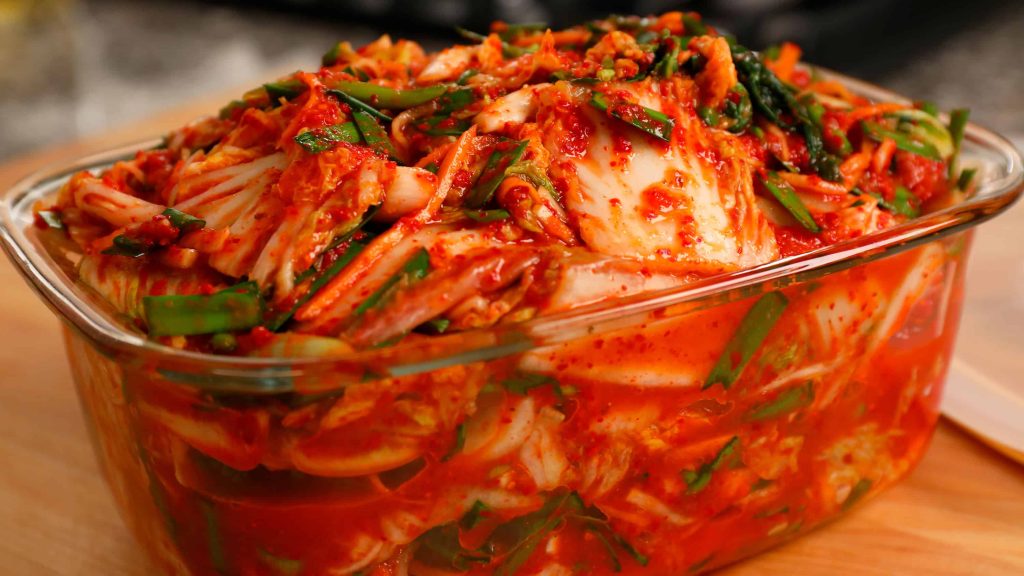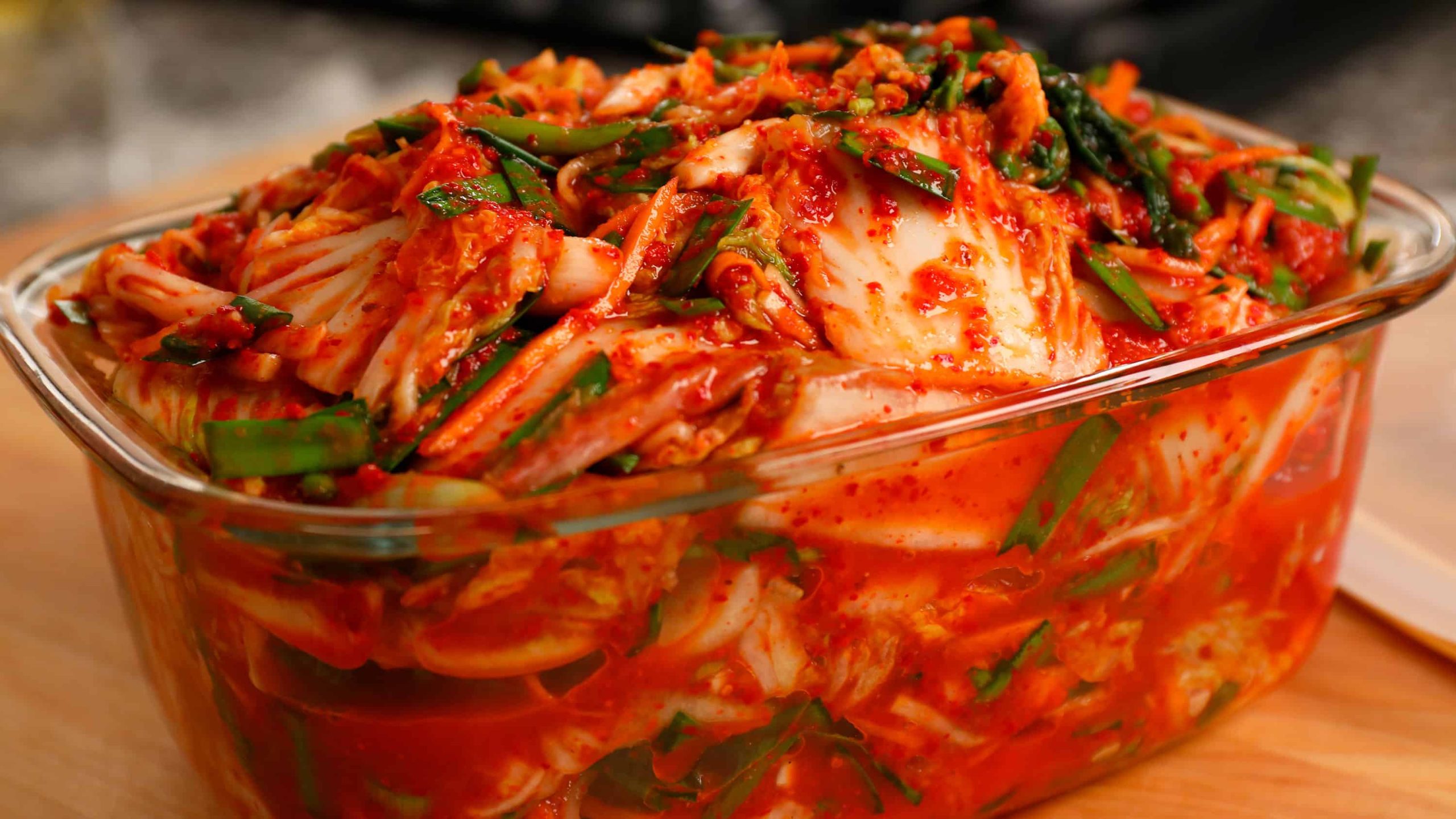Kimchi is a traditional Korean dish made of fermented vegetables, primarily Napa cabbage and Korean radishes, with a variety of seasonings. It’s known for its complex flavors and health benefits. Here’s a detailed guide to making and fermenting authentic Korean kimchi at home.

Essential Ingredients and Tools
Ingredients:
- 1 large Napa cabbage (about 2-3 lbs or 1-1.5 kg)
- 1/4 cup (60g) sea salt or kosher salt
- 4 cups water
For the Kimchi Paste:
- 1 cup (240ml) water
- 2 tablespoons sweet rice flour (or regular rice flour)
- 1/4 cup (50g) sugar
- 1 cup Korean red chili pepper flakes (gochugaru)
- 1/4 cup (60ml) fish sauce
- 2 tablespoons soy sauce
- 1 tablespoon minced garlic
- 1 tablespoon grated ginger
- 4 green onions, chopped
- 1 medium carrot, julienned
- 1 small Korean radish (mu) or daikon radish, julienned
- 1 small onion, finely chopped
- 1/2 cup (120ml) salted shrimp (saeujeot) or 1 tablespoon miso paste for a vegetarian option
Tools:
- Large mixing bowls
- Knife and cutting board
- Measuring cups and spoons
- Plastic or glass containers for fermenting
- Clean gloves (optional, to protect your hands from the chili paste)
Steps to Making and Fermenting Kimchi
- Prepare the Cabbage:
- Cut the Napa cabbage into quarters lengthwise and then into 2-inch pieces.
- Dissolve 1/4 cup of salt in 4 cups of water.
- Soak the cabbage in the salted water for about 2 hours, turning occasionally to ensure even soaking. This will help to soften the cabbage.
- Rinse and Drain the Cabbage:
- After soaking, rinse the cabbage thoroughly under cold running water to remove excess salt.
- Drain the cabbage in a colander and gently squeeze out any remaining water.
- Make the Kimchi Paste:
- In a small saucepan, combine 1 cup of water and 2 tablespoons of sweet rice flour. Cook over medium heat, stirring constantly until it thickens into a paste (about 5-7 minutes). Remove from heat and let it cool.
- Once cooled, add the sugar, gochugaru, fish sauce, soy sauce, minced garlic, grated ginger, and salted shrimp or miso paste to the rice flour paste. Mix well to form the kimchi paste.
- Combine Vegetables and Paste:
- In a large mixing bowl, combine the drained cabbage, green onions, carrot, radish, and onion.
- Add the kimchi paste to the vegetables. Using clean gloves (optional), mix everything thoroughly until the vegetables are well-coated with the paste.
- Pack and Ferment:
- Pack the kimchi mixture tightly into clean glass or plastic containers, leaving some space at the top for expansion during fermentation.
- Press down on the kimchi to remove any air bubbles. Seal the containers with a lid or plastic wrap.
- Fermentation Process:
- Leave the containers at room temperature for 1-2 days to start the fermentation process. You may see bubbles as the kimchi ferments.
- After 1-2 days, transfer the containers to the refrigerator to slow down the fermentation process. The kimchi will continue to develop its flavors over time.
- Taste and Enjoy:
- Kimchi can be eaten fresh after the initial fermentation or after several days to weeks of aging, depending on your preference for sourness and flavor development.
- Serve kimchi as a side dish, in soups, stews, or fried rice.
Tips for Perfect Kimchi
- Salt Ratio: Adjust the amount of salt to taste, keeping in mind that too much salt can slow down fermentation while too little can result in spoilage.
- Fermentation Time: The fermentation time can vary based on room temperature. Warmer temperatures speed up fermentation, while cooler temperatures slow it down.
- Storage: Store kimchi in airtight containers to prevent odors from spreading in the refrigerator and to maintain its quality.
Variations of Kimchi
- Baechu Kimchi:
- Traditional Napa cabbage kimchi with the recipe above.
- Kkakdugi:
- Kimchi made with cubed radishes instead of Napa cabbage.
- Oi Sobagi:
- Stuffed cucumber kimchi, usually made during summer.
- White Kimchi (Baek Kimchi):
- A milder version without chili flakes, suitable for those who prefer less spicy foods.
By following these steps and tips, you can make delicious and healthy kimchi at home. Enjoy the rich, tangy, and spicy flavors of this classic Korean dish as part of your meals!
